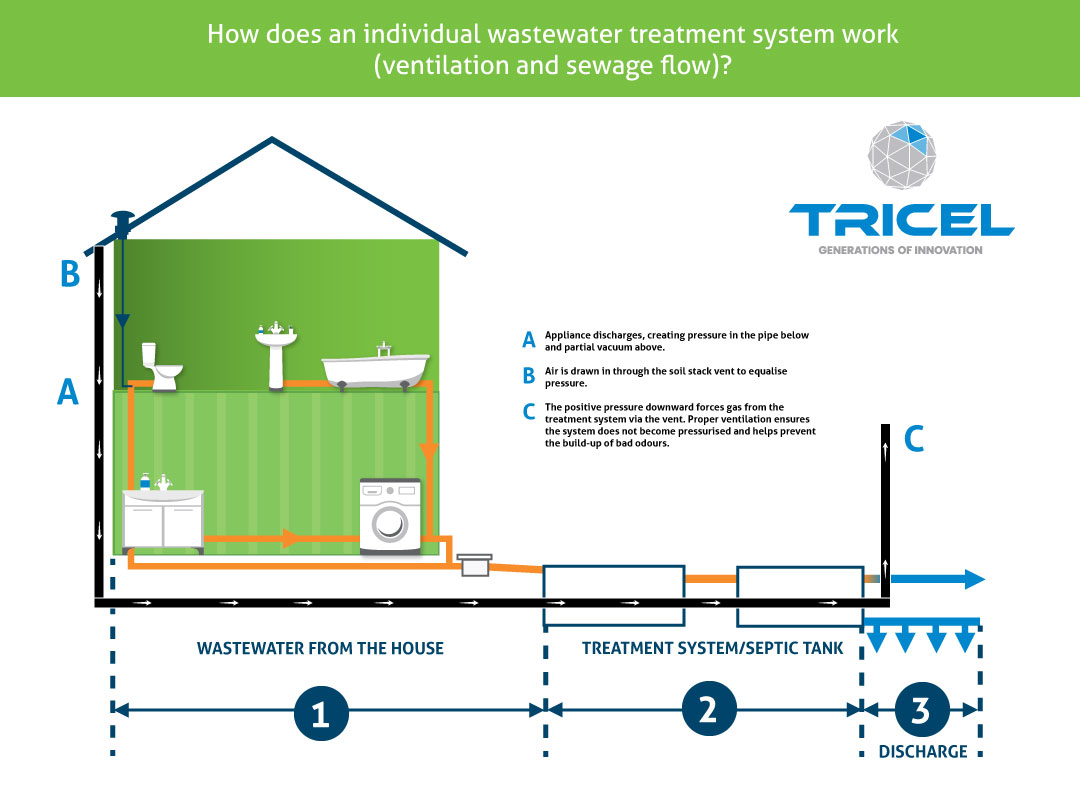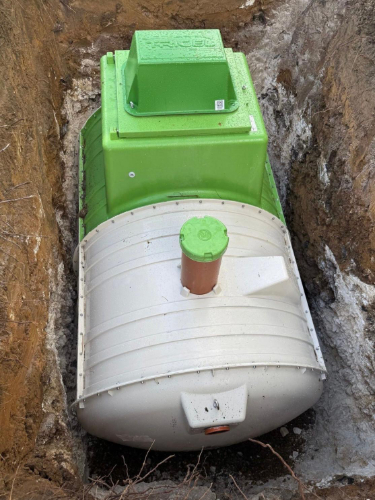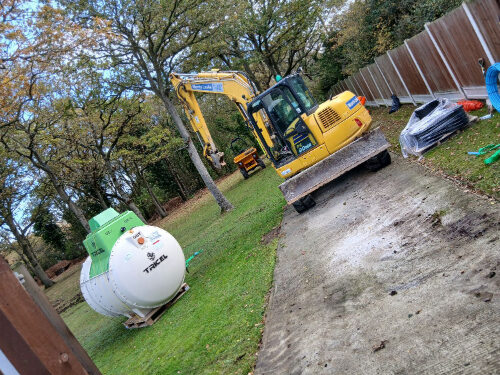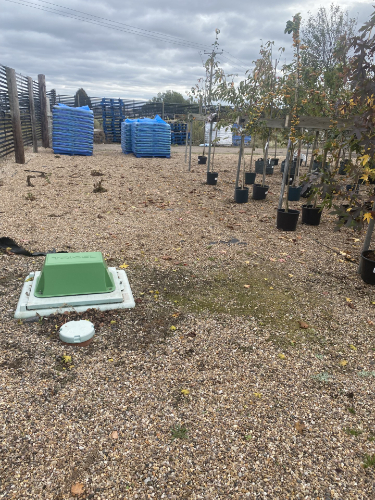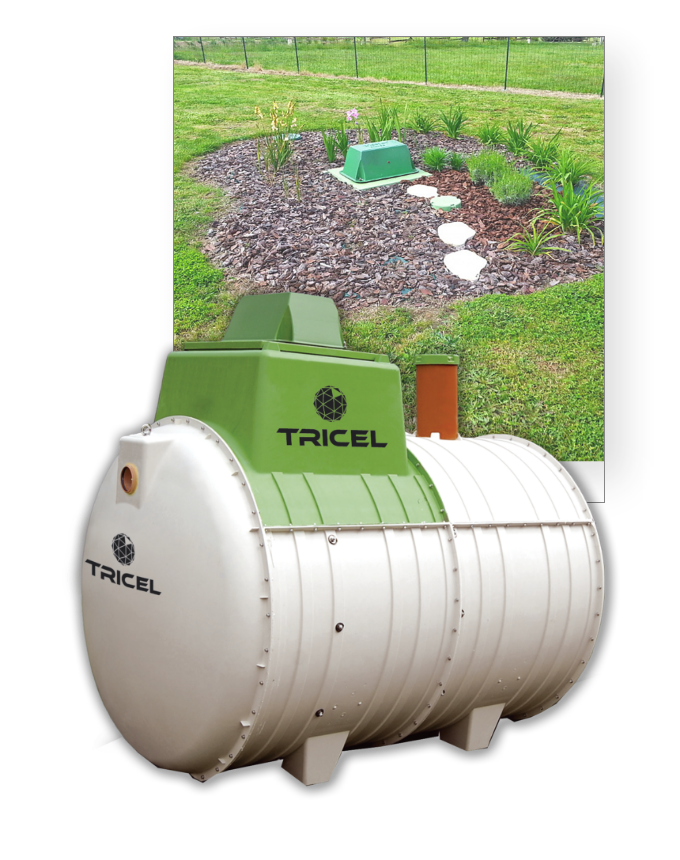
SEWAGE TREATMENT
The Best Domestic Sewage Treatment Plant
Are you looking for a new wastewater treatment system for your dwelling? We have the best domestic sewage treatment plant available on the market. Please look at our article and let us convince you of our savoir-faire!
Do you want an affordable, low-maintenance sewage treatment? One that is also easy to install and helps the environment? If so, it might be time to try Tricel’s best domestic sewage treatment plant! The Tricel Novo sewage treatment plant is perfect for maintaining all your sewage requirements. Learn more about Tricel and why the Tricel Novo is the best sewage treatment plant on the market.
KEY BENEFITS OF A TRICEL NOVO PLANT:
- Compact: about five m² of floor space (for five or six population equivalents);
- Lightweight: (200 to 300 kg): easy and inexpensive installation (sewage treatment plant with concrete tank weights more than two tons);
- Efficient: effective treatment, no risk of clogging;
- Adaptable: suitable for all types of terrain (difficult ground, the presence of groundwater);
- Reliable: long life (20 to 40 years, whereas the spreading of a traditional die must be replaced every 10 to 20 years);
- Tested and certified: for structural strength, water tightness, durability and treatment efficiency, adhering to European Standard EN12566- 3 (like all sewage treatment solutions manufactured by Tricel)
If you have any questions, feel free to call us
What Is the best domestic sewage treatment plant?
The Tricel Novo is a submerged aeration sewage treatment plant perfect for domestic and light commercial use.
Tricel Novo products are made out of sheet moulding compound (SMC). This solution is the most robust glass-reinforced plastic material available—ideal for fluctuating temperature environments.
Tricel is an expert in SMC processes and offers innovative industry solutions you can trust.
How Does It Work?
There are three main stages of the water treatment plant process:
- Primary Sewage Treatment
- Secondary Sewage Treatment
- Tertiary Sewage Treatment
During the first stage, wastewater is held in a settling tank, where the heavy solids drop to the bottom, and light solids float to the top.
The secondary treatment chamber is designed to degrade the biological content of the waste. This stage is through a process called aerobic breakdown.
In the final stage, liquid flows into the final settlement chamber. The liquid is then treated to meet the required standard to be safely passed out of the Tricel system.
OUR SEWAGE TREATMENT PLANT - TRICEL NOVO

The Best Domestic Sewage Treatment Plant on the Market
Low-cost, little maintenance, easy installation, and no water bills. It sounds too good to be accurate, but we can assure you it’s not.
For the best domestic sewage treatment plant on the market, try Tricel.
Tricel is a globally recognised provider of high-performance solutions for the water, environmental, construction, and distribution industries. We pride ourselves on our innovation, our quality, and our heritage.
To learn more about the Tricel Novo, speak with an expert today!
All Tricel products have great benefits, and the Tricel Novo is no exception. When you purchase the Tricel Novo, enjoy the following:
- Fast Delivery
- Easy installation
- Product Reliability
- Cost-effectiveness
And, of course, the Tricel Novo is easy to maintain due to its high-quality and durable materials. Our products are built to last.
We take pride in our high-quality products designed with innovation in mind.
Let’s look at some of the key features of the Tricel Novo that make it so popular with our customers. These include:
- Compression-moulded SMC tank
- SMC
- No concrete backfill
- Ceramic diffuser
- No moving parts or pumps in the plant
Tricel also prides itself on fast and safe delivery because the Tricel Novo is manufactured in the UK.
The Tricel Novo also complies with Environment Agency general binding rules in England, Natural Resources Wales exemption criteria and SEPA requirements.
How to pick your domestic water treatment plant?
If you want to make the most of your money when updating your existing domestic sewage plant. You need a robust, cost-saver product and one that is made for you. In the early stages of your project, you need to focus on a few points:
Population Equivalents: Also known as PE. It is calculated on the number of bedrooms/people you have in your home. For example, if you have four people in your house, your PE is 6 – therefore you’d be looking for a Novo UK6. Please refer to our table:
| Design population | UK6 | UK8 | UK10 | UK12 | UK18 | UK24 | UK30 | UK36 | UK42 | UK50 |
|---|---|---|---|---|---|---|---|---|---|---|
| Nbre of people | 1-6 | 2-8 | 3-10 | 4-12 | 6-18 | 8-24 | 10-30 | 12-36 | 14-42 | 16-50 |
Dimensions: The second detail you must focus on is where you will install your domestic sewage plant. Depending on the available space, you might need to make some adjustments.
Distances to respect in the UK
As a potential future owner of a Tricel Novo (domestic and commercial water treatment plant), it is your responsibility to ensure that the tank is installed correctly & respecting the distances below.
England and Wales:
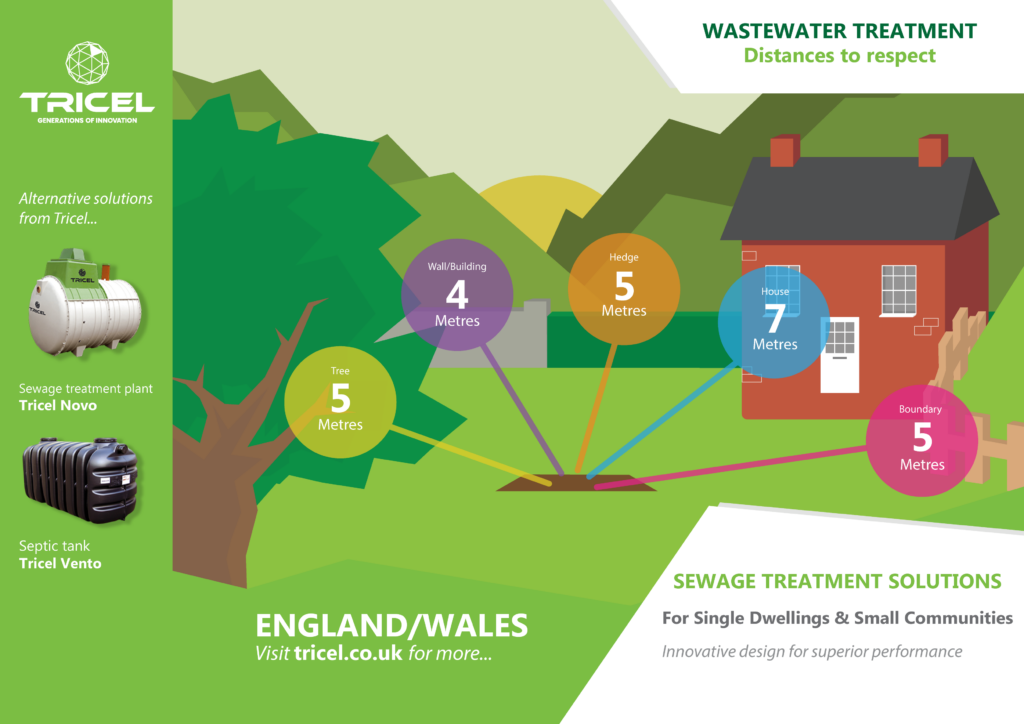
Your domestic sewage treatment plant has to be 5 metres away from trees, fence and hedge, 10 metres away from a watercourse or stream, and 50 metres away from any lake or foreshore. Last but not least, it has to be 7 metres away from your housing and 4 metres apart from a wall or a building. If living in Northern Ireland or in Scotland, please read more about distances to respect.
Interact with the Tricel Novo Water Treatment Plant
How to interact with the tank
- Click on the numbers to see the annotations.
- You can also switch between the treatment process stages (yellow circle at the bottom left-hand corner) and the anatomy of the Novo (green circle at the bottom left-hand corner).
- To view in Virtual Reality (VR), click the square at the top right-hand corner and simply scan the QR code with your phone.
- In order to check the dimensions, click on the spanner icon.
- To download an image of the Novo, click on the camera icon (top right-hand corner)
WHY CHOOSE US
Because Tricel manufactures and chooses the best materials for the design of its products. Most Tricel products have warranties of up to 10 years guarantee. All our products within this product range is CE certified to EU safety, health and environmental requirements.
Please find below the list of our products and the warranty that is applied. Note that this warranty is only valid if the sewage system is properly installed by a qualified installer. Please also know that all warranties are subject to correct use of the product, including maintenance as per manufacturer guidelines.
articles you may be interested in
Tricel product range
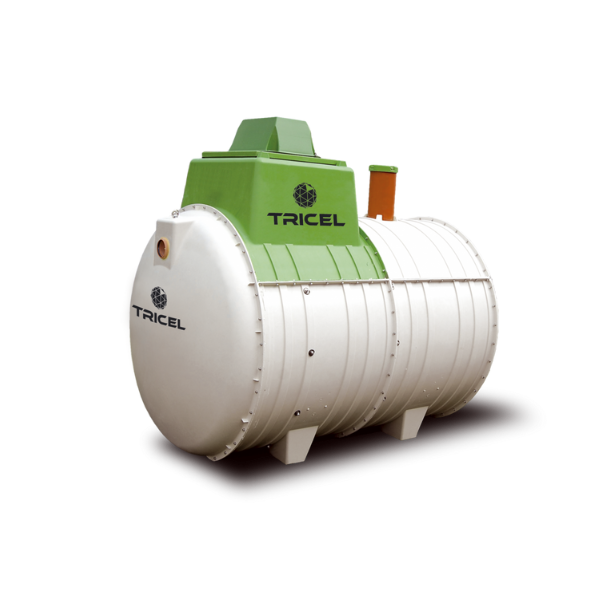
Tricel Novo Sewage Treatment Plant
Durable & long lasting SMC tank, shallow dig tank, easy installation (Plug and Play), long life components.
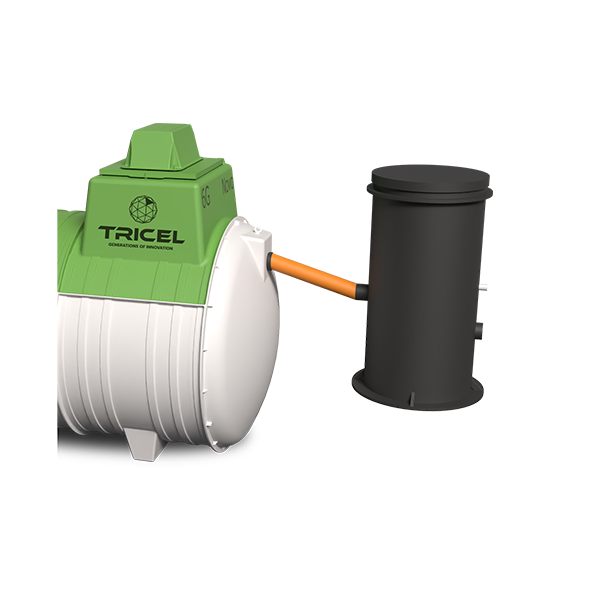
Tricel Phosphorus Removal
Tricel PhosClear is a ready-to-install system that reduces Phosphorus wastewater without using chemicals.
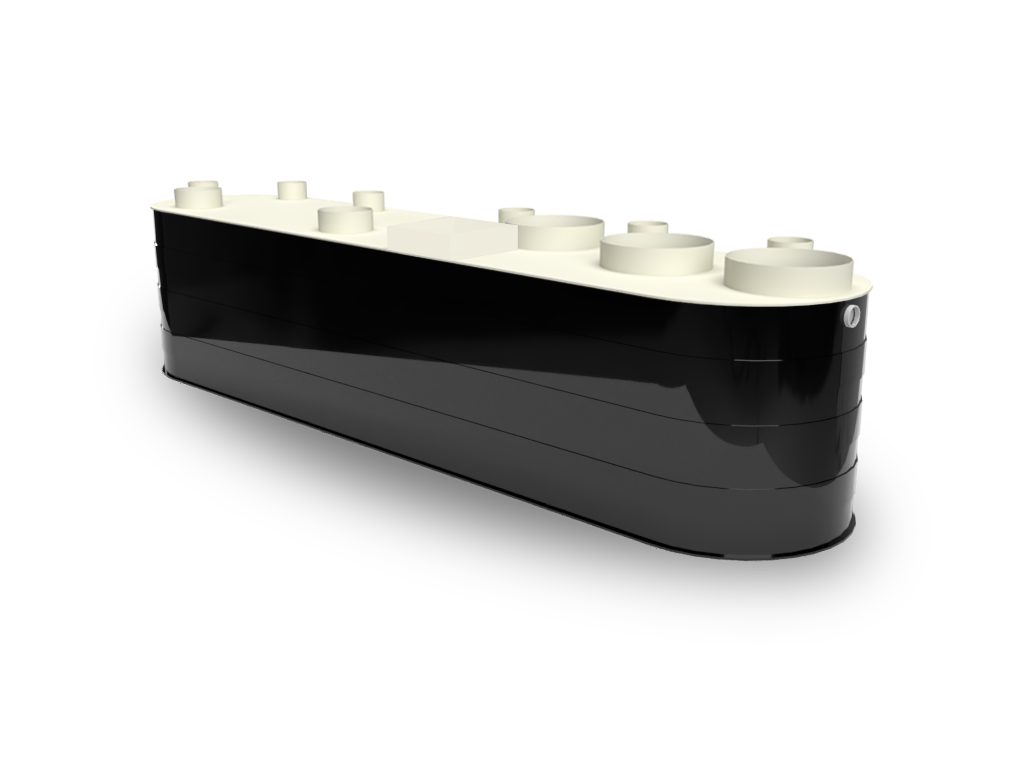
Tricel Maxus Sewage Treatment Plant
Commercial plant. Submerged Aerated Filter (SAF) technology. Ideal for every project over 50 Population Equivalent.
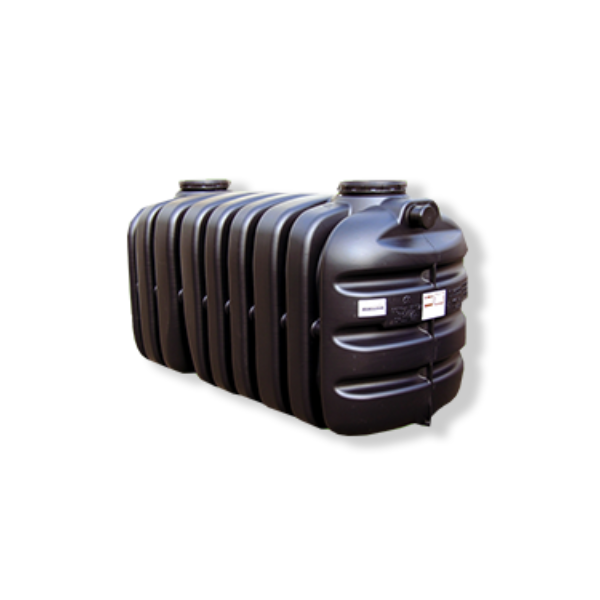
Tricel Vento
Septic Tank
Shallow dig tank, strong & robust underground tank, no electrical or moving parts.
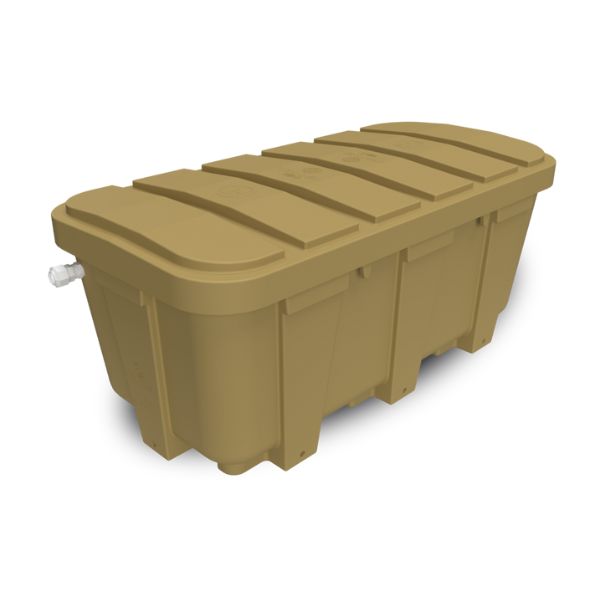
Tricel Tero Tertiary System
Next Generation tertiary wastewater treatment unit with proven E.Coli treatment capabilities.
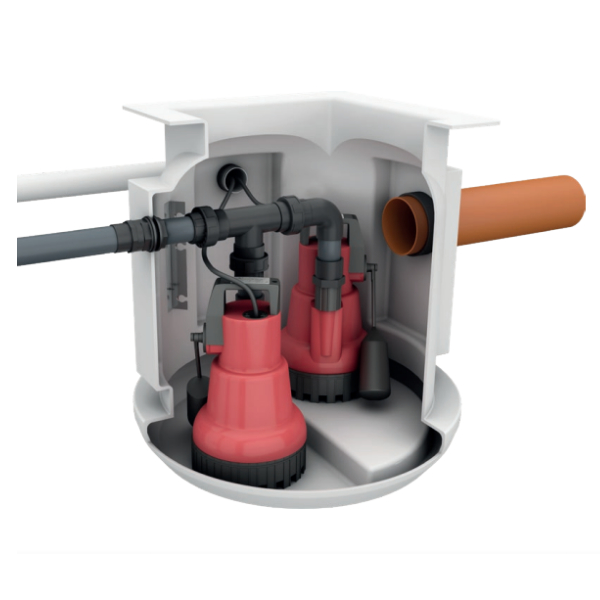
Tricel Pumping
Stations
Pump fluids from one place to another where gravity drainage cannot be used, easy and trouble-free installation.
MEET OUR TEAM
To find a technician in your area, visit our page
TALK SEWAGE TREATMENT
To speak to one of our agents online, click here
ASK FOR A QUOTE
Request a free quote today to have a quote that meets your project!
Key Features

Fast Delivery
Fast delivery + Rapid response to all our customers

Certified
Tricel Products are certified to EN12566-1 and EN 12566-3 certified

Technical expertise
Unrivalled technical expertise by our sales team regarding wastewater treatment solutions
Get in touch
